#uffington white horse
Text
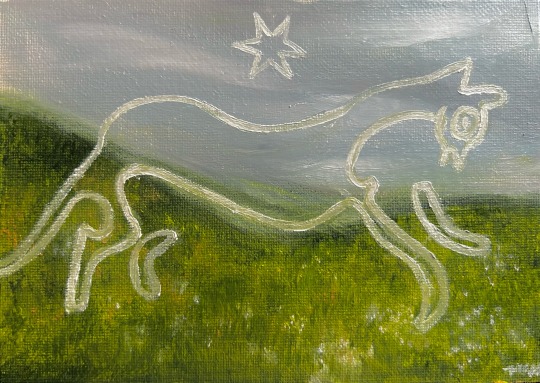
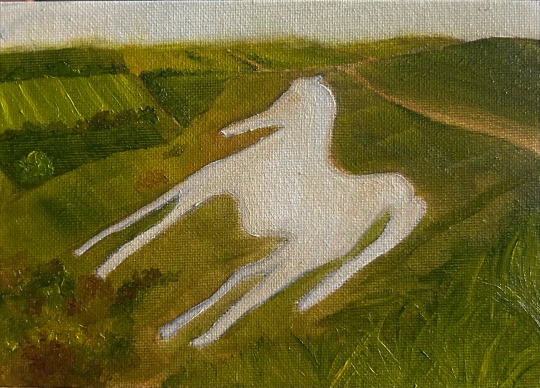




wanted all my horses in one basket, as it were
#basket update: new horses#silchester horse#white horse#folkestone horse#uffington white horse#westbury horse#autoart#art#horse#landscape#petroglyphs#geoglyphs#artist#art on tumblr#artists on tumblr#2024#2023#alton barnes white horse
25K notes
·
View notes
Text



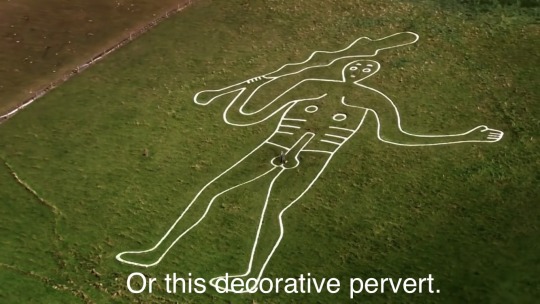


To make sure they stabbed the right people, ancient Britons formed primitive gangs, called tribes, and like many gangs they got into graffiti - vandalizing the countryside with gigantic doodles. Like this badly drawn horse. Or this decorative pervert.
Before Snapchat, hills were the most efficient way to distribute dick pics to a wide audience. As a result, Cerne Abbas became the second rudest hill in British history - after Benny.”
#cunk on britain#philomena cunk#diane morgan#british history#uffington white horse#Cerne abbas giant#prehistory#Iron Age#bronze age#Britain#England
280 notes
·
View notes
Text
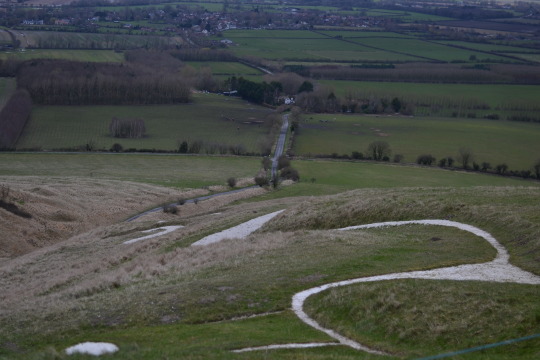
Today we went to see the Uffington White Horse, except the plot twist is that you can't actually *see* the white horse when you're at it. Which I sort of knew going in and was still surprised at how much you can't see it. (the National Trust sign said Please Don't Walk Down onto the Horse.) And then we didn't drive around to neighbouring villages to try to find the vantage points that do exist because of needing to eat food instead.
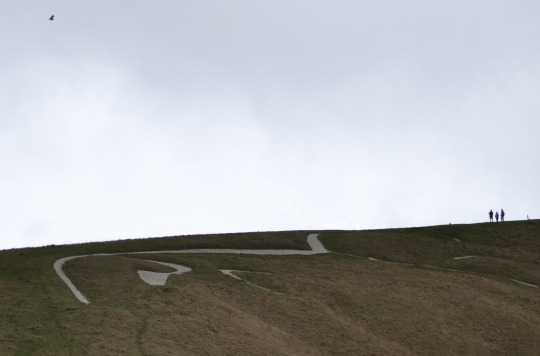
This is the view of the horse you get from just below on Dragon Hill.
Dragon Hill has a flat top and its own bare chalk spot; The Lore has it that this is the place where Saint George killed the dragon.



It was a nice walk up a big hill, with lots of sheep, and rain threatening.


#uffington white horse#dragon hill#st george#tiffany aching#matt spotted two foxes way down the hillside but the photo that shows how steep the hills were isn't good
7 notes
·
View notes
Text

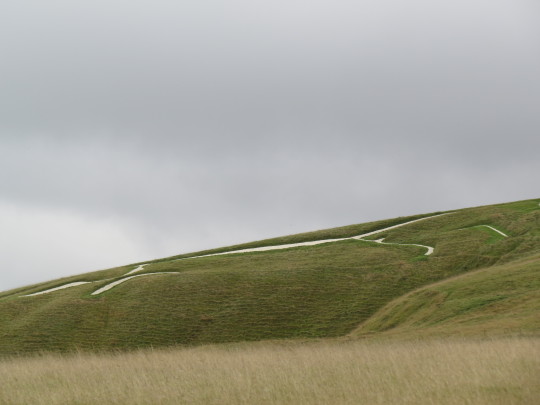
vale of the white horse, september 2023
the oldest white horse chalk carving in england, created in the late bronze age or early iron age.
4 notes
·
View notes
Text
Paid a visit to the Uffington White horse over the weekend, a 110m long chalk hill figure about 3000 years old. I love how weird it looks. Especially from ground level, when you really wonder at the organisation involved in getting it looking good from a distance.
I can confirm from previous observation that it is very visible from the hill range a few miles away ... which I'm going to guess was where a different tribe lived ...


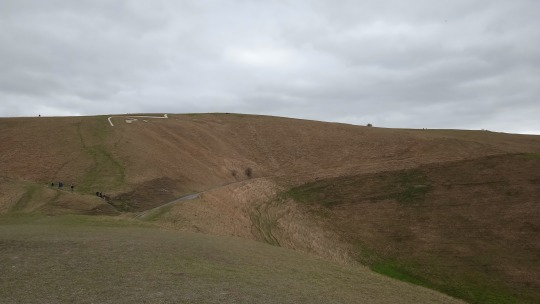
There were so many larks flying and singing ... and also several red kites hunting them.

For more on the Uffington White Horse (and for a better picture of it), you can read this ...
Oooooor maybe just this:
8 notes
·
View notes
Text
If you can't get natural ley lines, home made are fine
So there are quite a lot of reports about people who visit places like Auschwitz and talk about how it feels supernaturally cold and eerie, no birds etc. This would suggest that humans are capable of changing an aura of a place from somewhere that was previously neutral to something palpable.
So this got me thinking about how this would apply to things like ley lines. People point out that certain holy or sacred sites tend to fall on places of power, but maybe its the other way around. Perhaps instead of following the contours of these lines, the very act of creating these structures created the places of power in the first place.
I was looking at the post about the uffington white horse and got to thinking that maybe having people coming up every year for thousands of years to work together on this site might have an effect on the places of power in that region.
(interesting fact, which I do certainly believe that up until recently Auschwitz would have still had this effect, having been there myself I don't think this is the case now. Most likely because there have been so many people visiting the site in the past few decades that the aura of the place is now predominately sad. It feels like a graveyard rather than a place of horror. Other, less visited concentration camps still definitely have this effect though).
#ley lines#holocaust#uffington white horse#places of power#not 100% sure how much I believe in this#but some places definitely have a feeling#anyway#this might explain why
4 notes
·
View notes
Text



It’s the Uffington White Horse!! :^)
#suddenly realised we were driving home very near it and suggested we pay it (and Swindon!!!!!) a visit#absolutely buzzing#xtc fan moment 😎#xtc band#english settlement#uffington white horse#Swindon
13 notes
·
View notes
Text
The Tower, Woolstone, Oxfordshire
In 1938 John Betjeman wrote a feature on ‘Gentlemen’s Follies’ for Country Life magazine. In it he noted a number of well-known follies, including the then very new tower built by Lord Berners at Faringdon, close to where Betjeman lived. He also mentioned another local folly, a tower in the village of Woolstone (then Berkshire, now Oxfordshire). So whilst the house above doesn’t look much like a…
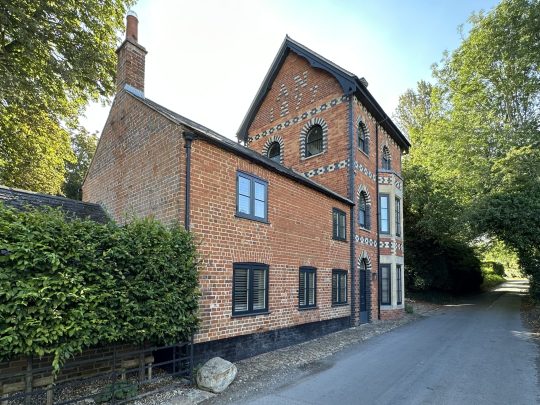
View On WordPress
0 notes
Text
Uffington White Horse: A Personal Journey Through Time and Chalk
This striking figure of a horse etched onto a hillside in Oxfordshire, made of trenches filled with white chalk, it stretches across the hill, both grand and unassuming against the backdrop of nature's green,
I came across something fascinating in the news today, and it made me pause and reflect. Have you ever heard of the Uffington White Horse? It’s this striking figure of a horse etched onto a hillside in Oxfordshire, made of trenches filled with white chalk, it stretches across the hill, both grand and unassuming against the backdrop of nature’s green, a silent witness to…
Pic: © Copyright Dave Price

View On WordPress
#facelift#Historic#M4#National Trust#Oxfordshire#Post a day#Postaday#preserve#Re-chalking#Swindon#Travel#Uffington#Uffington White Horse#Whitehorse Hill
0 notes
Text

Uffington White Horse
April 2024, Uffington Oxfordshire
2 notes
·
View notes
Text
you guys are getting fanart for an album none of you care about OK!!!!!!!!!!!!!!!!!!!!!!!!!!!!!!!!!!!!!
10 notes
·
View notes
Text
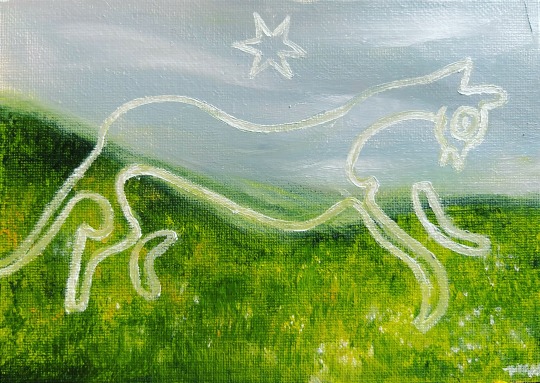
thinking about the uffington white chalk horse again
#uffington white horse#autoart#horse#painting#oil painting#art#artist#art on tumblr#artists on tumblr#2023#i’m cramming the paintings in this month good lord. i’ve done so many#landscape#abstract#abstract expressionism#abstract landscape
216 notes
·
View notes
Text
It’s cold and I don’t wanna get out of bed so fuck it, let’s talk about the White Horse of Uffington.
There are a lot of hill figures in the south of England, in places where the topsoil is a thin layer of grass on top of a thick layer of Upper Cretaceous chalk. You just peel back the sod and there it is, ready to be a regimental badge, a horse, or a guy with a giant dong. In the case of the White Horse of Uffington specifically, there’s a bit more soil underneath the sod, so you dig a ditch and fill it with crushed chalk.
Most of these figures aren’t actually all that old, ~500 years old or less, because grass is an incredibly tenacious plant and it grows back over the chalk. If you want to keep a hill figure around it requires regular maintenance. The White Horse has been dated to the late Bronze Age or early Iron Age, meaning it could well be three thousand years old (there’s a technique called optically stimulated luminescence where scientists can tell when a thing was last exposed to light; they dug down to the bottom of the chalk filled trench and tested the soil underneath. The Horse dates to between 1300 and 550 BC).
Again - and this is the part where I get emotional and weepy - a hill figure requires regular maintenance. Without it, the White Horse would be invisible in a few decades. So every seven years, the villagers of the surrounding communities get together with their baskets of chalk and hammers (and, in more recent years, knee pads) and pound fresh quartz into the trench to prevent it from being overgrown.
With some interruptions during modern times (the Horse was covered in sod during WW2 so it couldn’t be used by the Luftwaffe for navigation) the scouring of the Horse has taken place every seven years for three thousand years. The original builders spoke a Celtic language, or possibly a lost pre-Indo-European language. They didn’t have the same culture or religion or worldview or anything to the people preserving the Horse today. We don’t know what the Horse meant to them. And yet for three thousand years, every seven years, Roman Britons or Saxons or medieval peasants or Clive from down the way have faithfully got together to scour the Horse, to carry it forward from an unknown past to an unknown future.
It’s a tradition even more remarkable for the fact that there’s no point for the Horse’s existence except the fact of the Horse’s existence. This isn’t some high ritual (like the rebuilding of the Ise shrine in Japan, which is connected to the imperial family) it’s a bunch of farmers crushing up rocks. Empires have fallen, gods have faded out of memory, but the Horse continues.
#White Horse of Uffington#hill figures#low ritual#deep time#chalk#art#landscape#i get emotional about archaeology#horse for the horse and of the horse shall not perish from this rural English hillside
2 notes
·
View notes
Text
the only reason we have the white horse of Uffington today is because people from nearby villages had the tradition of removing any vegetation regrowing on it every single year. FOR MORE THAN TWO THOUSANDS YEARS. isn;t it crazy? this tradition has survived everything - R*mans and christianisation and epidemies and wars. if R*mans had killed more Celts in this region would we know of it today or would the horse disappear completely under the grass in 10 years?
3 notes
·
View notes
Text
getting v emotional reading about geoglyphs and sad about the fact there is a highway cutting through one of the nazca lines
#something about art that is so large it can only be seen from a great distance.#also things like the uffington white horse which would be lost were it not for generations of people maintaining the lines amd adding fresh#chalk... man#we even have one in australia even though its modern nobody knows who made it#cave art and prehistoric art in general makes me go insane too bc like. art surviving that long is so... idk. man!!
1 note
·
View note
Text
SET FIVE - ROUND ONE - MATCH TWO


"Uffington White Horse" (c.1380-550 BCE) / Chauvet Cave Bear (30,000 and 32,000 BP)
UFFINGTON WHITE HORSE: its public landscape art, its from bronze or iron age and people still maintain it and this chain of people working together, even through the original purpose is lost, the art is not, the community aspect of it (anonymous)
CHAUVET CAVE BEAR: I'm not a very emotional person but there's something about prehistoric cave paintings that make me cry my eyes out. There are too many examples (please check out the Altamira cave bisons they're beautiful) but one that never fails to amaze me is the Chauvet Cave Bear. He's painting with so much care, he's only one of hundreds and thousands of paintings in this cave, many of them more detailed, colorful and dynamic than this guy, but there's something about the careful lines that the artist (bc prehistoric people were artists) put on this wall that touches me. It's put in a scene where he's hunted, he's alone, in a peaceful position, possibly rummaging through a bush. The anatomy is maybe even cartoony with its tiny ears and small mouth but it's realistic in all the ways that matter at that time, anybody could look at it and see a bear, the artist had to carefully watch this bear (or many bears) to memorize its lines, it's humps and structure and the scrounge up the materials to paint, and finally put to rock this animal they admired from a distance. The Chauvet Cave has thousands of cave bear remains, estimating 200 individuals. The cave also has a quarter of ALL cave bear depictions in pre-history. That means that whoever painted this bear not only saw one in the wild but lived alongside these animals their entire lives, their culture was deeply locked with them. There's a chamber in this cave with 50 bear skulls, all of them carefully placed. This painting shows so much care and love from people that are often depicted as brute and uncaring but they were just as capable as any current human of not only caring but DEPICTING their love. It's a beautiful early representation of our capability for admiration and cherishing things that weren't essential for basic survival. Also the artist was damn good that bear has so much expression without even having eyes, the line thickness balance is amazing. (athenasabattoir)
(The "Uffington White Horse" is a prehistoric hill figure created by trenches filled with crushed white chalk. It is 110 m (360 ft) long and is located on Whitehorse Hill in England.
The "Chauvet Cave Bear" is a prehistoric cave painting in the Chauvet-Pont-d'Arc Cave located in Ardèche, France. This cave contains hundreds of preserved figure paintings from the Upper Paleolithic time period. The central bear is 120 cm (47 in) and was painted using red pigment.)
#theyre looking at each other... in judgement... or admiration???#art that fucks you up tournament#polls#atfyu polls#id in alt text
395 notes
·
View notes